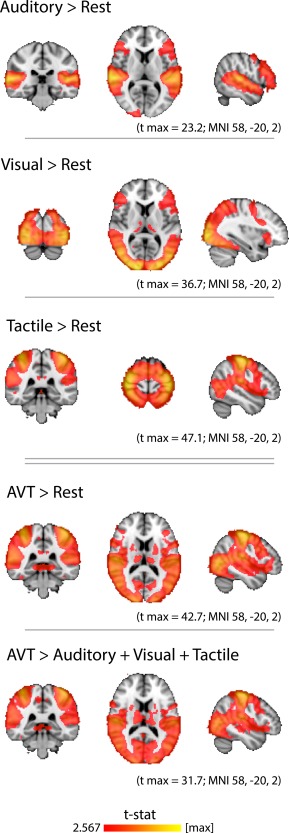Figure 1.

Univariate analysis of brain regions activated by auditory, visual, and tactile stimuli. Hearing sounds most strongly activated the superior temporal lobe, peaking in Heschl's gyrus and the planum temporale. Watching (silent) videos broadly activated occipital and parietal cortices, peaking in the occipital pole. Touching objects resulted in an activation pattern that peaked in pre‐ and postcentral gyri and included additional, broad aspects of the parietal lobe. The simultaneous presentation of objects in all three modalities (AVT), as compared to rest, resulted in a broad cortical activation pattern which peaked in the auditory, visual, and somatosensory cortices, and resembled a concatenation of the unimodal maps. A “superadditive” map of regions in which simultaneous AVT presentation evoked greater activity than the sum of the separate unimodal activations revealed a multimodal potentiation effect. All slices are in radiological convention (right side of image corresponds to left side of brain). MNI coordinates specify the slices displayed, and not the locations of peak voxels. All volumetric statistical images in this article may be downloaded at the links provided in the text. [Color figure can be viewed in the online issue, which is available at http://wileyonlinelibrary.com.]
